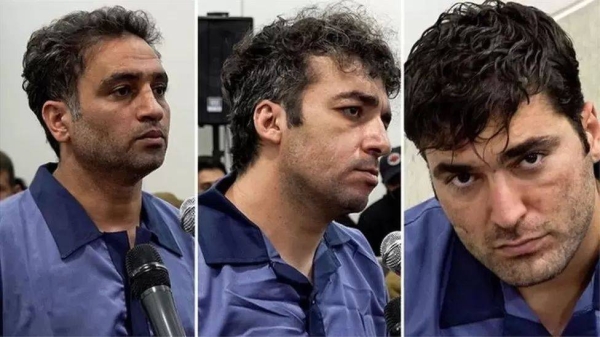
Protestors came out across Iran on Saturday as anti-government demonstrations enter their fourth week.
Footage shared online showed Iranians on the streets in several towns and cities chanting anti-government slogans, with security forces engaging in violent clashes with protestors.
Unrest in Iran was sparked by the death of 22-year-old Mahsa Amini on Sept. 16 after her arrest by the country"s moral police for allegedly not wearing her headscarf properly.
Protests have been reported on Saturday in many of Iran"s major cities, such as Tehran, Karaj, Isfahan, Mashhad, Qazvin, Kermanshah and Shiraz, among others, according to AFP and IranWire.
"We are no longer afraid. We will fight," read a large banner that was placed on an overpass of a motorway that crosses the Iranian capital, Tehran.
Meanwhile, several strikes took place in Kurdish cities in western Iran, alongside Mahabad in West Azerbaijan, with reports of security services shooting at protestors in the city of Sanandaj.
Schoolgirls in Saqez — Amini"s hometown — took off their hijabs (headscarves) and waved them around, shouting "women, life, freedom" on Saturday, the start of Iran"s academic year.
University students across Iran also refused to go to class and joined protestors on the streets, according to IranWire.
Demonstrations over Amini"s death have morphed into a wider challenge to Iran"s Islamic government, which is deeply unpopular among large sections of society.
Leaked medical evidence shows that Amini suffered several violent blows to the head while in police custody, while Iranian authorities claim she had a "sudden heart attack".
There is widespread popular anger over many of the government"s Islam-inspired policies, such as compulsory hijab for women, a faltering economy hit hard by sanctions, and the violent response to protestors.
At least 154 people, including children, have been killed since nationwide protests began, according to Iran Human Rights (IHRNGO), though the figure is likely to be much higher as many deaths go unreported.
Thousands have been detained.
IHRNGO Director Mahmood Amiry-Moghaddam claimed last week that the killing of protestors in Iran "amounts to a crime against humanity", urging the international community to "prevent further crimes".
On Friday, fountains in Tehran were filled with red paint by an unknown artist to symbolize the blood that has been spilt in Iran.
The authorities" response has intensified since the beginning of the protests in September, cutting off the Internet and mobile data for long periods at a time.
There have been repeated reports of security forces using live ammunition and shotguns against demonstrators, besides rubber bullets and batons.
Ultra-conservative President Ebrahim Raisi has blamed the unrest on outside forces, notably the United States, while several officials have called on the security services to stop the protests.
At a Saturday press conference, Raisi said students would not serve the interests of "the enemy", in reference to the US, which is often referred to as the "great Satan" by Iran"s government.
"The enemy thought they could achieve their goals in the universities, ignoring the fact that our students and professors are vigilant and will not allow the enemy"s false dreams to come true," he said.
Waves of anti-government protests have broken out in Iran in recent years.
In 2019, there were mass demonstrations after the government hiked the price of gas. Hundreds were reportedly killed in the clashes that followed. — Euronews












